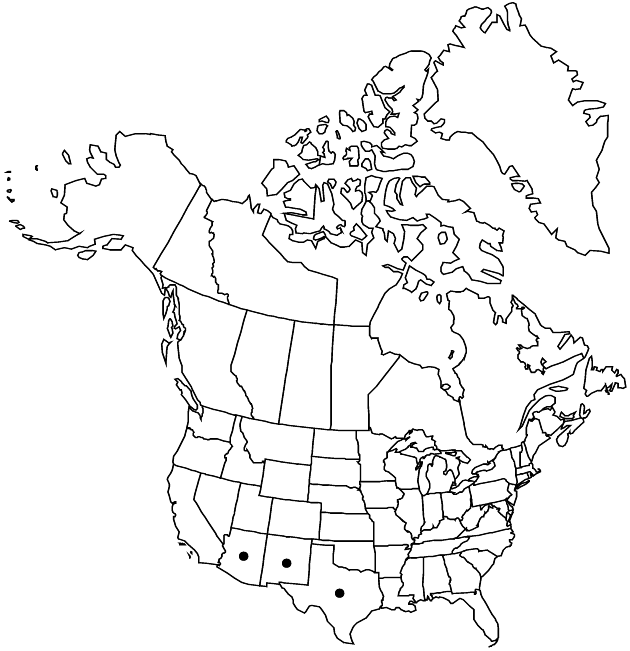Baccharis bigelovii
in W. H. Emory, Rep. U.S. Mex. Bound. 2(1): 84. 1859.
Shrubs, 30–100 cm (branched from bases). Stems erect to ascending, slender, striate-angled, glabrous, resinous. Leaves present at flowering; short-petiolate; blades (1-nerved or obscurely 3-nerved) obovate to oblanceolate, 20–35 × 3–15 mm, distally reduced and narrowed, bases cuneate, margins irregularly incised to coarsely serrate or 2-serrate, faces glabrous, gland-dotted, resinous. Heads (20–50) in corymbiform arrays. Involucres campanulate; staminate 4–5 mm, pistillate 4–5 mm. Phyllaries lanceolate, 1–4 mm, margins scarious, medians green, apices acute, erose. Staminate florets 15–20; corollas 3.5–4 mm. Pistillate florets 25–30; corollas 2–2.6 mm. Cypselae 1.5–2.2 mm, 5-nerved, glabrous; pappi 3–4.5 mm.
Phenology: Flowering Aug–Nov.
Habitat: Dry rocky ground in coniferous forests
Elevation: 1300–2000 m
Distribution

Ariz., N.Mex., Tex., Mexico (Chihuahua), Mexico (Durango), Mexico (Sonora)
Discussion
Baccharis bigelovii occurs in the general Chihuahuan Desert region in the Davis Mountains of West Texas, and in the Chiricahua and Huachuca mountains of Arizona. It is recognized by the relatively short stature, obovate, coarsely and irregularly serrate leaves, erose-ciliate phyllaries, and 5-nerved cypselae. It is similar to B. thesioides, which differs mainly by having narrower, more oblong leaves with more evenly serrate margins and spinulose teeth. Further investigation may show these two taxa to be different geographic expressions of a single species centered in Mexico.
Selected References
None.